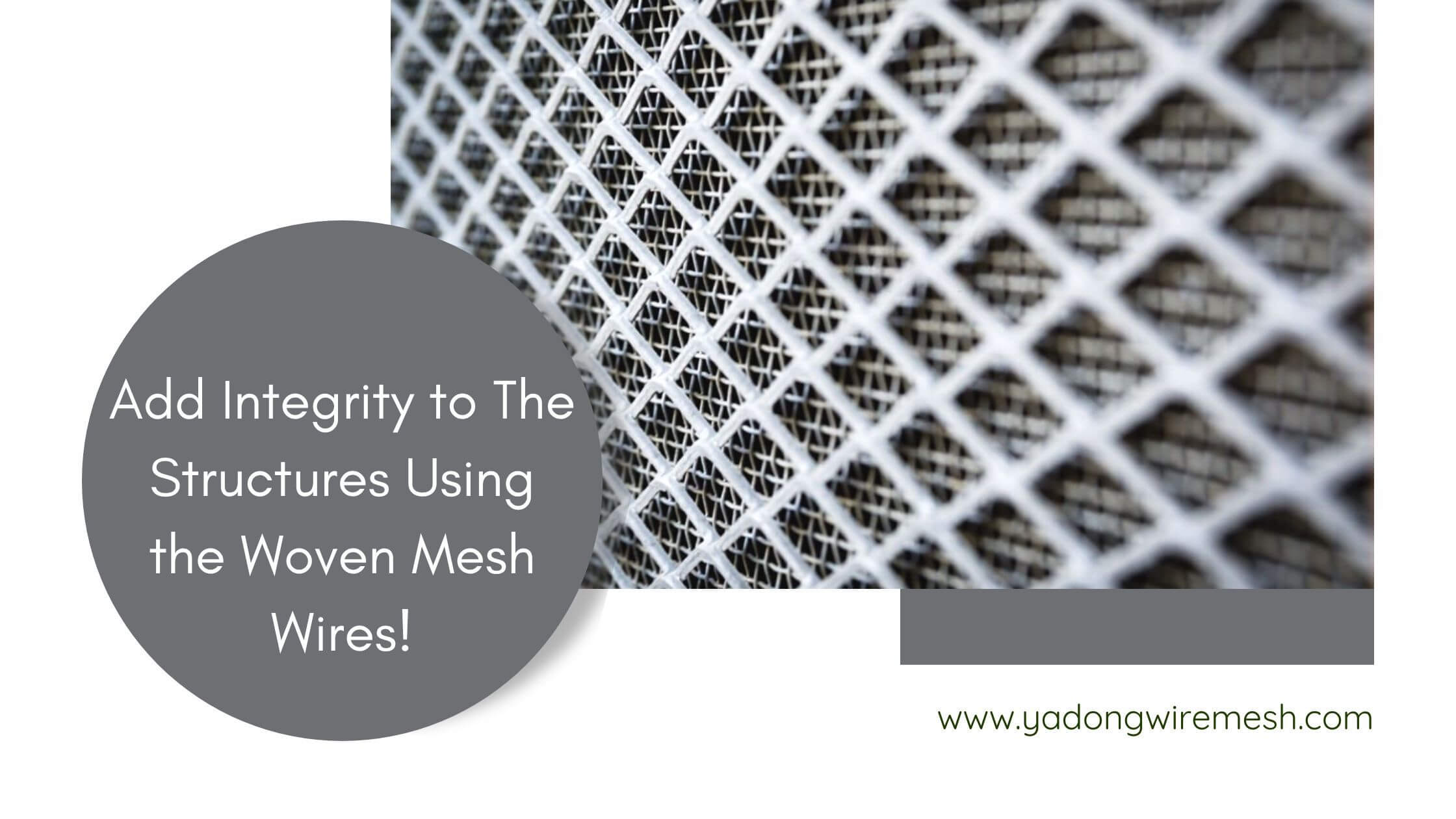Add Integrity to The Structures Using the Woven Mesh Wires!

Woven Mesh Wires are seen to be used widely around the world. This is because of the fact that these woven mesh wires are considered one of the most versatile materials that exist in the world. These mesh wires are the products that are helpful in order to facilitating various different types of operations that are being conducted all around the world. Based upon the design of the structure with a dynamic look, it is designed in a way that it filters out all the unwanted contaminations that are in a product. It is designed in a way that it can affect the everyday lives of human beings. At first glance, it might seem it might not be very easy for people to figure out what exactly is going on; however, the situation might often result in giving rise to the question of what exactly these wire meshes are and what purpose they have served. In order to know more about these products and how they can be helpful for the people around us, we need to study more about what this brilliant product is and how it could be used in order to get the best of it.
What is woven wire mesh?
When we talk about the woven wire mesh it is also referred to as the woven metal mesh, wire clothes, and rolls, as these are the rolls or sheets that consist of the layers of interlocked metallic wires that have been through a process of weaving in order to make a specific weave pattern giving is a chain like a look. The number of individual wires that are used in order to construct these meshes is determined based on the pattern of the weave the size and the diameter of the wire, the size of the aperture, the micron rating, and the width, and the length. All these are the factors that determine how many wires are supposed to be used in order to construct a perfect woven wire mesh.
How is a Woven Wire Mesh made?
When we talk about how a woven wire mesh is made, we see that it involves the use of a special type of loom that is designed in a way that it can work best with the metallic wires, using this design and pattern loom is usually set to weave around 48”, 60” or 72” but nowadays we could see the availability of 98” and wider sizes as well. The weaving technique that is used in order to manufacture these wire meshes are the types of techniques that are used by woven mesh wire manufacturers that are similar to the techniques that are used in the weaving of clothes. As the weaving looms work in a way that they interlock each and every wire with the help of the tension that is used at each of the cross sections in order to keep the mesh intact. Based on the recent technology, the recent opening sizes are ranging from 5 microns t 4 microns.
Types of the Wire Mesh
Almost all the types of woven wire mesh that are produced are a result of the same kind of process. However, it is noticed that the wire mesh is available in three different types, and each one has its own benefits and properties associated with them. These are in the form of the square mesh, the filter mesh, and the architectural mesh.
Square Mesh
A woven wire square mesh is a type of mesh variant that consists of wefts and warp wires that are joined in a way that they share an identical wire diameter. It can be woven in the form of a plain weave or even in the form of an inter-crimped weave or a pre-crimped weave as well. These are the types and specifications of the weaves that could be used depending upon the requirement of the user. Following that, the square mesh is usually available in the form of wire mesh rolls cut in the form of wire mesh panels depending upon the size of the panel that is required.
Filter Mesh
Filter mesh or metal mesh filters are also known as stainless-steel filter meshes. These are the wire mesh variants in which we get to observe a network of metallic wires that is joined in a way that it forms peruse and rigid openings in the form of the pores. They are designed in a way that they can remove contaminants from a substance that is usually provided.
Architectural Mesh
This mesh is also known as the metal mesh fabric. It is a high tensile variant of the mesh used as a design element in various architectural designs and processes. This type of mesh is constructed from 316 -stainless steel up to 80 % use of the materials that are usually recycled.
